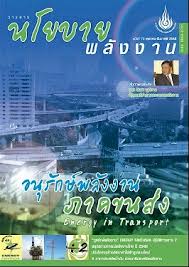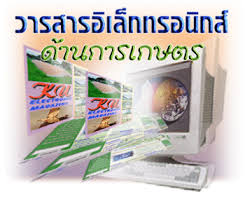1. What is different between Journal &Magazine? and give examples
Journal
* Is the book of prime entry.
* As soon as transaction originates it is recorded in journal
* Transactions are recorded in order of occurrence i.e. strictly in order of dates.
* Narration (brief description) is written for each entry.
* Ledger folio is written
* Relevant information cannot be ascertained readily e.g. cash in hand can't be found out easily.
* Final accounts can't be prepared directly from journal.
* Accuracy of the books can't be tested.
* Debit and credit amounts of a transaction are recorded in adjacent columns.
* Journal has two columns one for debit amount another for credit amount.
* Journal is not balanced.
* With the computerization of accounting journal may not be used for routine transactions like
receipts, purchases, sales etc
Magazines
•Are periodicals whose goals are to entertain and inform
•Authors are often professional writers, rather than experts in the subject
•Content might be fact, but might be anecdote or opinion
•Articles almost never have bibliographies
•Require no specialized knowledge or vocabulary to be understood
•Articles are not peer-reviewed
•Often have colourful covers or interfaces, and will usually contain advertising and many pictures
•Examples: Discover, Maclean's, National Geographic, Psychology Today, Scientific American, Sport's Illustrated, Time and Wired
"Magazine" is often used to describe a popular periodical like Time or People. “Journal” is used to describe a scholarly periodical that is written by experts. Journal articles tend to be longer and provide extensive citations to additional research.
2. DC & LC classification
The Library of Congress Classification (LCC) is a classification system that was first developed in the late nineteenth and early twentieth centuries to organize and arrange the book collections of the Library of Congress. Over the course of the twentieth century, the system was adopted for use by other libraries as well, especially large academic libraries in the United States. It is currently one of the most widely used library classification systems in the world. The Library's Cataloging Policy and Support Office maintains and develops the system, posting weekly lists of updates on its Web site.
The system divides all knowledge into twenty-one basic classes, each identified by a single letter of the alphabet. Most of these alphabetical classes are further divided into more specific subclasses, identified by two-letter, or occasionally three-letter, combinations. For example, class N, Art, has subclasses NA, Architecture; NB, Sculpture, ND, Painting; as well as several other subclasses. Each subclass includes a loosely hierarchical arrangement of the topics pertinent to the subclass, going from the general to the more specific. Individual topics are often broken down by specific places, time periods, or bibliographic forms (such as periodicals, biographies, etc.). Each topic (often referred to as a caption) is assigned a single number or a span of numbers. Whole numbers used in LCC may range from one to four digits in length, and may be further extended by the use of decimal numbers. Some subtopics appear in alphabetical, rather than hierarchical, lists and are represented by decimal numbers that combine a letter of the alphabet with a numeral , e.g. .B72 or .K535. Relationships among topics in LCC are shown not by the numbers that are assigned to them, but by indenting subtopics under the larger topics that they are a part of, much like an outline. In this respect, it is different from more strictly hierarchical classification systems, such as the Dewey Decimal Classification, where hierarchical relationships among topics are shown by numbers that can be continuously subdivided.
Listed below are the Classification Schedules by class.
A General Works
B Philosophy. Psychology. Religion
B - BJ Philosophy. Psychology
BL, BM, BP, BQ Religion: Religions, Hinduism, Judaism, Islam, Buddhism
BR - BV Religion: Christianity, Bible
BX Religion: Christian Denominations
C Auxiliary Sciences of History
D History: General and Old World
D - DJ History (General), History of Europe, Part 1
DL - DR History of Europe, Part 2
DJK - DK History of Eastern Europe (General). Soviet Union, Poland
DS History of Asia
DT - DX History of Africa, Australia, New Zealand, etc.
E - F History: America (Western Hemisphere)
G Geography. Maps. Anthropology. Recreation
H Social Sciences
H - HJ Social Sciences: Economics
HM - HX Social Sciences: Sociology
J Political Science
K Law
K Law (General)
KD Law of the United Kingdom and Ireland
KDZ , KG - KH Law of the Americas, Latin America and the West Indies
KE Law of Canada
KF Law of the United States
KJ - KKZ Law of Europe
KJV - KJW Law of France
KK - KKC Law of Germany
L Education
M Music and Books on Music
N Fine Arts
P Language and Literature
P General Philology and Linguistics
PA Classical Languages and Literatures
PB - PH Modern European Languages
PG Russian Literature
PJ Oriental Philology and Literature
PK Indo-Iranian Philology and Literature
PL - PM Languages of Eastern Asia, Africa, Oceania, Hyperborean, Indian, and Artificial Languages
PN , PR-PS ,
PZ General Literature. English and American Literature. Fiction in English. Juvenile belles lettres
PQ Romance Literatures
PT Germanic Literatures
Q Science
R Medicine
S Agriculture
T Technology
U Military Science
V Naval Science
Z Bibliography. Library Science
The DCC Label contains a structured view of Representation Information separating, for example Structure, Semantics and various types of software, referring to each of these by its CPID which allows the retrieval of any specific piece of Representation Information. When the set of bits which make up a piece of Representation Information is retrieved, if the user does not know what to do with it then use can be made of the associated CPID which points to a DCC Label which points to the Representation Information for those bits, and so on. The recursion stops at various End Points
Classes Listed
Main article: Outline of Dewey Decimal classes
The system is made up of ten main classes or categories, each divided into ten secondary classes or subcategories, each having ten subdivisions.
000 – Computer science, information & general works
100 – Philosophy and psychology
200 – Religion
300 – Social sciences
400 – Language
500 – Science (including mathematics)
600 – Technology
700 – Arts and recreation
800 – Literature
900 – History, geography, and biography
3. access the library website : What is the call number?
A call number is a group of numbers and/or letters put together to tell you where in the library to find your book.
A call number is located at the bottom of the book on the spine. It helps you to find your books quicker.
Once you've got your call number from the card catalog, it's time to go find your book!
This is where a call number is located:
Don't let it confuse you, but just because it's a call number doesn't mean it has numbers! Some call numbers are made up of letters.
4. What are the sources of knowledge? identify as much as
you know.
We all continually learn new things in life. Constantly increasing our knowledge is essential if we are to progress further or develop ourselves. Whatever field we are involved in, we always have to look for ways and means to expand our knowledge. Increase in knowledge in a particular subject can lead to better understanding, grasp, judgement, intelligence and ability in that area. It can expand our thinking and heighten our expertise on a topic. So how do we go about gaining knowledge? What are the sources of knowledge? Below I am listing a few sources from which we gain knowledge in any field.
1. People: I think people are the biggest source of knowledge for anybody. Right from childhood, we have learned things by watching others. Whatever field you want to gain knowledge in, there must be many who have enough experience in that field. So make use of this valuable source of information by learning from the experience, accomplishments, mistakes and expertise of others. Study carefully and associate with people who are experts in the field you want to gain knowledge about.
2. Books: The next best source of knowledge can be books. There are millions and millions of books written throughout the world in every language and on almost any topic imaginable. Whatever problem you are facing must have been faced by somebody else before, and its solution is likely to have been preserved in the form of a book. If you are serious about gaining knowledge on a topic, then read any book, magazine, article etc. you can lay your hands on related to that topic. Read as much as you can.
3. Experience:This is another important resource for the seeker of knowledge. It is said that experience is a great teacher, so learn from your past experiences and the experience of others. Learn from your and others' past and present achievements as well as mistakes.
4. Experimentation and observation: Experimentation is to try out new things and observation is to pay attention to small and big details. If you want to learn something new, you may have to experiment and observe a lot. You would need to explore in deep, try out new things to see what works and what does not. Observe not just your own efforts, but also of others. Experimenting new things and observation can help you in learning very quickly. People who do not experiment or observe much may take a long time to learn. Keep in mind though, that while experimenting, you may encounter a few failures too. Do not become discouraged as failures are a part of the learning curve, specially while attempting something new. Try to learn from failures instead of becoming disheartened.
5.Thinking and pondering: While learning a new thing, you need to concentrate a lot. Just reading lots of books is not sufficient as you need to fully grasp what you are reading. Deep understanding about a subject is likely to come only through deep thinking and contemplation. Ponder over what you have read, observed, experienced or experimented. Isn't is wise to make sure you have fully understood a thing before moving further?
5. What do you read this week?
Twilite
The books also teach young girls that it's fine to let your boyfriend completely control your life & keep you away from your friends if he believes it's in your best interest. It's going to make a lot of young teenagers think nothing is wrong if they end up in an abusive relationship because that's how Edward is.
I love the books, don't get me wrong, I just think it sucks that the character gets a little ridiculous sometimes. It's viewed as him being chivalrous & caring. Unfortunately we don't like in a world werewolves & vampires & guys who are actually like that aren't good.








No comments:
Post a Comment